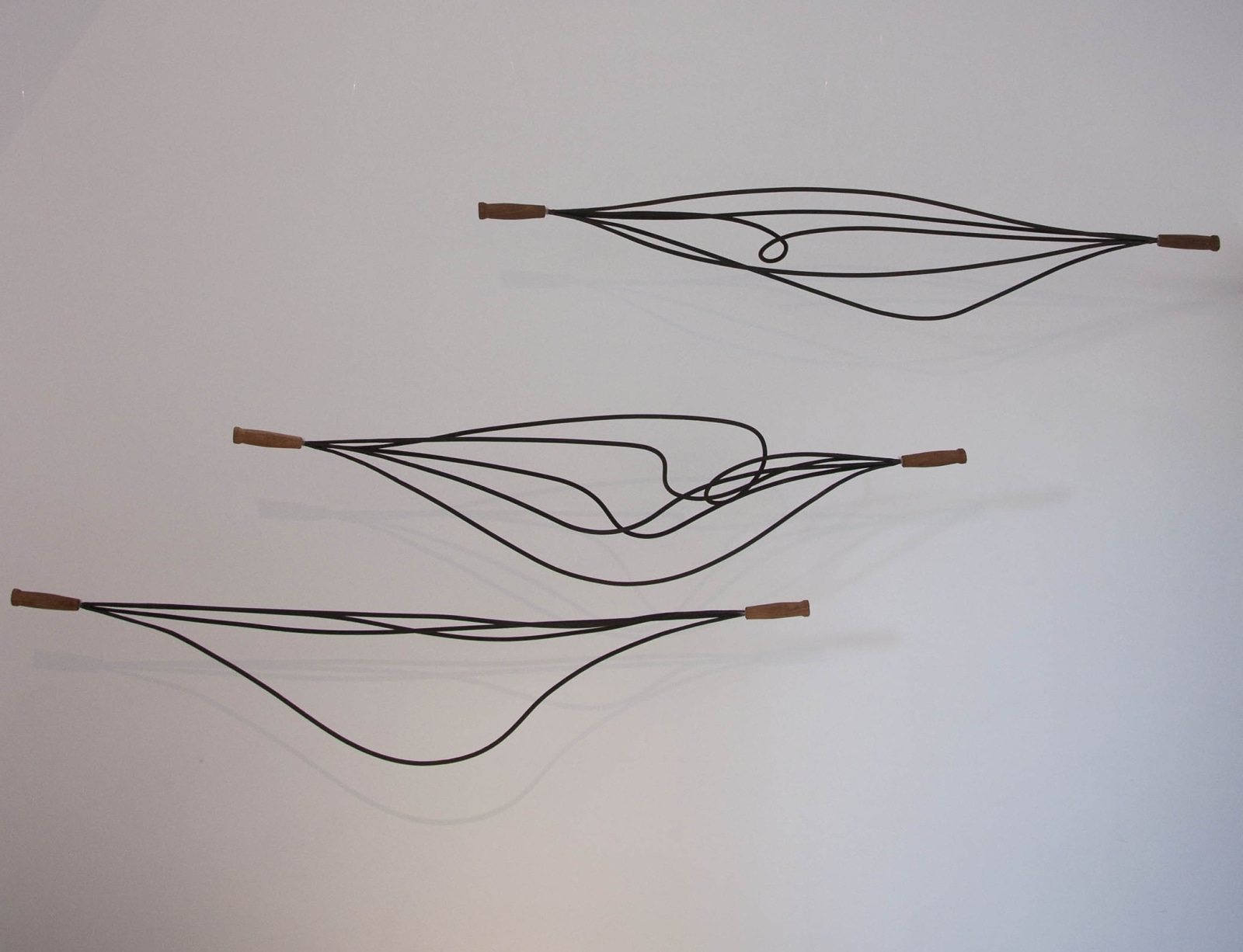
The eight works in sculptor Ranjani Shettar's "Present Continuous" may be thought of as visual metaphors for a variety of subtle physical experiences-an obscure fragrance, a touch of the breeze, a hum of sound, a vibration that cannot be located. In the room-sized installation Scent of a Sound (2010-11), Shettar recreates a walk through the woods, with two centrally suspended wire sculptures as abstract visualizations of wind passing through trees, with their swells and curves suggesting whooshing sounds and motion on a tectonic scale. Fleshy, wild mushroom-like brown growths, made from stainless steel, muslin, tamarind kernel powder paste and lacquer, sprout in the corner. Shettar is known for creating abstract, lyrical compositions by combining a variety of mediums and techniques, and here she binds the cloth to wire with the organic paste, a process she learned from a craft community of idol-makers in India. The paste stains the cloth in different shades of yellow and brown, heightening the earthy context of the installation.
Like much of Shettar's work, the installation looks effortless and airy, but closer observation reveals an intriguing complexity. In Stretch (2010), a log of wood is smoothly carved to mimic the elastic properties of clay, subverting and forcing the material to assume a property alien to its essence. The artist is interested in creating works that defy categories and definitions. An example of this is Aureole (2010), a bronze-cast installation of what looks like a wave of flames jutting perpendicularly from the wall. There are several possible ways in which to approach this work: visually, it seems as though the artist is attempting to soften the plain, white expanse of the exhibition space; formally, the work is generated from the process of bronze casting, whereby flames coax molten metal into solid form; historically, it is reminiscent of the ring of flames around the Nataraja bronze sculptures popular in medieval South India; and emotionally, it feels as though something has touched the wall fleetingly, but left a loving trace.
Shettar's fascination with tools is made manifest in her "Kinetics" series (2009). In each sculpture, blades and rods are curved so that they look bent and wilted, lacking strength and purpose. The series explores the idea that space, both interior and exterior to the object, is something that is vibrant and can be made mobile and dynamic. Thus a straight iron rod can become buoyant by a simple curvature. The artist refers to the sharp shadows cast by the stark tools mounted against the white wall as the "flattest drawings." Shettar's shapes often emerge from lines drawn on paper, and the shadows that she consciously creates with the tools replicate the two-dimensionality of the drawings through a three-dimensional medium.
There were two works in the exhibition that asked to be imagined on a different scale. Maquette (2010), a model for an unrealized large-scale public sculpture, is a cast bronze work that resembles an abstract rendering of a bird about to take flight. If made monumental, one could imagine the piece having great drama, but the miniature version is simple and beautiful as is, with the appeal lying in its near-perfect balance. The final work in the exhibition was a canopy-style installation entitled Lagoon (2011), fashioned from strings of pear-shaped wooden and glass beads of different sizes lacquered in varying shades of aquamarine and lavender. The piece attempts to capture the lushness of nature through the colors and abundance of the beads and the mystique of water's unending, myriad lunar rhythms.
Shettar is an elusive artist; she is neither visible nor well known in her home city of Bangaluru. Her work is most often seen in international exhibitions, and though the biggest draw of the present exhibition was the lyricism of Seem of a Sound, overall it conveyed the impression of a sensitive and diligent artist who works at a measured, necessarily withdrawn pace in order to achieve her desired effects. This artist, one may conclude, is in no hurry.
-Deeksha Nath